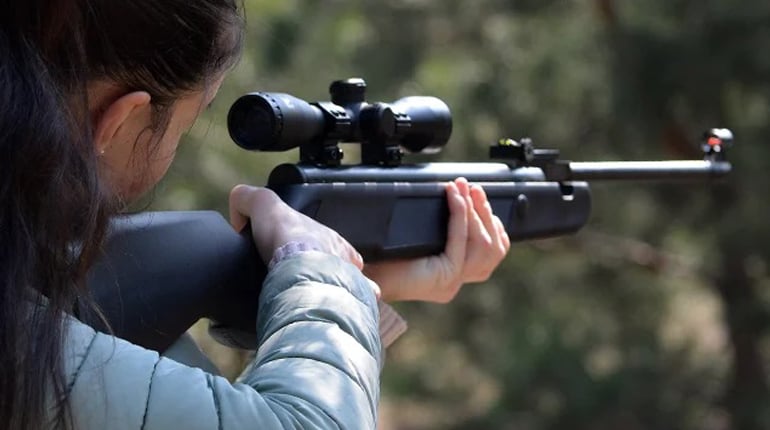Looking to become Queen or King of the Spring Guns? You need to read this Airguns blog. Springers are more challenging to shoot than a PCP, but they can also be more fun if you have the right technique. Just Air Guns has a large selection of Spring Air Rifles and many outstanding rifles such as the Winchester Air Rifles that are on special offer and should not be missed. The following 10 tips have been collected to offer some help and advice when shooting a spring air rifle. However, nothing works better than practice, practice and practice! If you have any questions about this blog article, please contact our support team via our website at www.justairguns.co.uk today!
1. THE RIGHT GUN
It’s great to find a rifle you like the look of, but it’s even more important to find one that fulfills your needs, and that’s more important than ever with springers. Are you intending to do some target shooting? Maybe a heavier underlever which is more stable in the aim for short amounts of time is best. Do you want to take down some rabbits? Then a lighter break-barrel might be a better choice.
2. COCKING TECHNIQUE
Keep both yourself and your air rifle safe by using the correct technique to cock the gun. If the cocking mechanism is not under full control and the spring is released prematurely, this could cause the barrel, lever or sliding compression tube to snap closed in a violent manner, posing the risk of physical injury as well as damaging the gun. Instead, keep a firm hold of the barrel or lever while you seat a pellet in the breech and then guide the barrel or lever back to its starting position, keeping control of it the whole time.
3. A LIGHT TOUCH
Because of the way the spring and piston move inside the cylinder when a shot is released, a springer will recoil both backwards and forwards when it’s fired. The rifle must be allowed to recoil exactly the same way each time if your shots are going to be consistent, and therefore accurate. That means adopting a light hold on your gun – definitely not a death grip – and letting it recoil naturally rather than trying to tame or otherwise interfere with the natural movement of the rifle as it’s fired, recoils and finally comes to rest.
4. REST IT
Springers don’t generally like being placed directly onto a solid support like a gate, fence post, set of shooting sticks or bench bag because this can affect the way the gun recoils. You can still make use of all these stability aids, however, simply by placing your leading hand on the support, then resting the forend of the rifle in your hand so it can recoil in the same way as normal. That means your shots will still be on target.
5. TRIGGER HAPPY
Even though we’re talking tiny fractions of a second, a pellet takes longer to leave the barrel of a springer than a PCP. This is something known as lock time. It’s really important to familiarise yourself with your trigger so you know exactly when the shot will be released. It’s also vital to stay in the aim for a couple of seconds after you’ve squeezed the trigger. This technique, which is called follow-through, ensures you don’t move the gun while the pellet’s still traveling down the barrel. Otherwise, this could mean a missed shot.
6. USE THE RIGHT AMMO
A spring-powered rifle, just like any other airgun, will usually be most accurate with a specific type of pellet, and the only way to find out which one works best in your rifle is to shoot several types of ammo. As a general rule, springers tend to prefer lighter pellets than PCPs, and while there are plenty of exotic shapes to try, my own preference is for a classic dome head design rather than a pointed or hollow point pellet.
7. PRACTISE!
Due to the way they recoil, springers demand good technique from the shooter, and the best way to gain and maintain that technique is by putting in plenty of practice. When doing so, take the time to really get to know your spring-powered airgun. Does your rifle shoot differently if you move your leading hand further up the stock, for example? What happens if you curl your fingers loosely around the forend, or adopt a kneeling or prone stance?
8. ACCURATE SHOOTING
Springers, especially high-quality rifles are incredibly accurate, with a consistency to rival or even beat many PCPs. If you shoot 10 shots over a chronograph, the variation in velocity will usually be below 10 feet per second, and often less than five. That means you can be confident in your kit, and that will breed confidence in your ability to shoot it well.
9. MAKE YOUR SHOTS COUNT
Some rifles that have an on-board powerplant like Gamo break-barrels have a magazine that gives them a multi-shot capability. But the vast majority of spring guns are single-shot only – so make that shot count! A fluffed shot means you’ll have to take your eye off the target while you reload, so instead of relying on the luxury of a follow-up shot, make that initial pellet “the one”.
10. THE RIGHT AMOUNT
Because springers have plenty of moving parts, they need to be stripped down and lubricated from time to time. It’s tempting to think that more lubrication means a smoother action and better performance, but sometimes less is more. In general, a thin smear of grease applied with a small paintbrush over the piston and mainspring will suffice. And remember to keep it away from the face of the piston seal to avoid the risk of dieseling.
JUST AIR GUNS
Address: Just Air Guns, Trimex House, Pier Road, Feltham, TW14 0TW
Website: www.justairguns.co.uk
Email: [email protected]
Phone: 0330 999 5224

